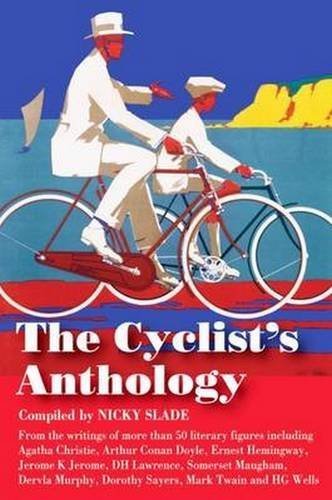PEDDLE POWER
Cycling has soared in popularity as more of us abandon our cars in favour of two wheels. The advantages speak for themselves. Cycling isn’t just easier on the wallet (it’s cheaper to own a bike than a car), but it’s also a healthy form of exercise and environmentally friendly. Nobody knows exactly how many bikes there are in the world today (it could be over a billion), but Denmark is reputedly the most cycle friendly country on the planet: 9 out of 10 people own a bike compared to the 4 out of 10 who drive a car, while half of the country’s children travel to school on two wheels. Small wonder that in 2016 the Danish capital Copenhagen had more bicycles than cars on the road!
The fact that more people are cycling and that governments are building the infrastructure to support them, is a point worth celebrating which is why Nicky Slade’s The Cyclist’s Anthology couldn’t have come at a better time. This excellent collection of writings from the 19th, 20th and 21st centuries is a gem of a read regardless of whether you’re into bikes or not! Over fifty literary figures and personalities (including John Betjemen, Quentin Blake, Sir Arthur Conan Doyle, Jerome K Jerome, J.G. Ballard and Dorothy L Sayers), share their thoughts and observations about bicycles, road users, cycling haute couture and anything else related. Interspersed with these musings are fascinating nuggets of information about the history of the bike.
It was German inventor Karl von Drais (1785 – 1851) who in 1817 revealed the potential of two wheel travel with the Laufsmachine, or ‘running machine’. This extraordinary contraption was ahead of its time despite having a wooden beam for a frame, in line wheels, and no pedals! Although the steering was rudimentary, Laufsmachine users could make adjustments to rebalance their weight without touching the ground. Von Drais often used his invention on the forestry estate where he worked and it wasn’t long before similar designs with equally catchy names (dandy horses and hobbyhorses among them) were falling off the production lines, ensuring the Laufsmachine’s eventual consignment to the annals of history.
Von Drais could never have foreseen how bicycles would evolve into lighter, faster, foldable and even bendy machines! The modern cyclist is spoilt for choice yet no matter how good a rider he/she is, there’s nothing more embarrassing than falling off a bike. For American author Mark Twain (1835 – 1910), sitting on a bicycle was as big a challenge as getting on it in the first place:
“When you have reached the point in bicycling where you can balance the machine tolerably fairly and propel it and steer it, then comes your next task – how to mount it. You do it in this way: you hop along behind it on your right foot, resting the other on the mounting-peg, stiffen your left leg, hang your other one around in the air in a general and indefinite way, lean your stomach against the rear of the saddle, and then fall off, maybe on one side, maybe on the other; but you fall off. You get up and do it again; and once more; and then several times.” (From What Is Man? And Other Stories: Taming the Bicycle, 1893)
Maybe he should have taken the advice of America’s Munsey Magazine which in an 1896 article suggested that “learning control of “the wheel” is mostly a question of mind over matter.” Intrepid British polar explorer Maria Leijerstam almost certainly cracked the art of wheel control in 2013, when she became the first person in the world to cycle from the edge of the Antarctic continent to the South Pole.
The Cyclist’s Anthology is a delightful compilation that’s easy to read and difficult to put down. Nicky Slade has done a great job pulling together a wide range of material that beautifully captures the highs, lows, thrills and spills of travelling on two wheels.
Reviewed by Juliette Foster




